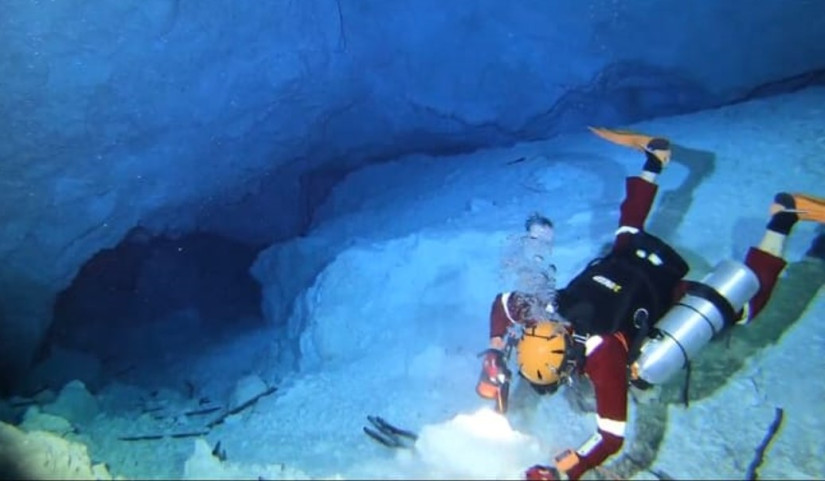
A research team from Universitas Gadjah Mada (UGM), together with several international experts, conducted the Banggai Series 1 International Expedition from Aug. 17 to 27 to explore the rich karst and cave systems in the Banggai Regency, Banggai Islands, and Banggai Laut in Central Sulawesi.
This expedition aimed to explore karst and cave studies in areas with significant geological potential for global scientific research.
Dr. Hendrie Adji Kusworo, a lecturer in UGM’s Master of Social Development and Welfare program and the expedition coordinator, stated that this initiative is part of UGM’s academic focus on karst studies.
“This expedition is just the first step in a series of research efforts to be carried out in collaboration with researchers from various countries,” Dr. Kusworo said in a statement to reporters on Friday (Aug. 30).
In collaboration with UGM geology expert Dr. Didit Hadi Barianto, the expedition also involved participants from various countries, including Catrapatti Raditya from Sainsreka Explorasia (SRX) as Lead Operation Officer, Juswono Budisetiawan from Sainsreka Explorasia (SRX), Dimas Dwi Septian, and Aries Dwi Siswanto from UGM’s Karst Geography Study Group.
International geohydrology experts such as Todd Kincaid from the United States, Mathias Nicoud, and Julie Coulumb from France, and participants from Malaysia, including Md Rosman bin Md Haniffah, Lee Kian Lie, and Foong Chin Hing, also took part. The involvement of international researchers highlights the global scientific community’s strong interest in studying karst phenomena in Indonesia.
During the expedition, the research team explored three main areas: Banggai Regency, Banggai Islands Regency, and Banggai Laut Regency.
These areas are known for their numerous karst caves on land and underwater. The region is rich in karst formations, including underground rivers and springs that emerge in the sea.
“The discovery of hidden caves within the karst formations is the main attraction that motivated us to conduct further exploration,” said Catrapatti Raditya.
One of the intriguing discoveries during this expedition was a cave named “Udang Maote.” The name was given after the research team discussed with residents who described a unique phenomenon in the cave they call “White Rain.”
“This phenomenon occurs when divers enter the cave and feel white droplets of water that resemble rain,” he said.
In addition, Juswono Budisetiawan from SRX explained that the karst formations in the Banggai Islands differ significantly from those in other regions like Kalimantan. While Kalimantan’s karst formations are towering, those in Banggai are hidden beneath the land and sea surface.
This makes exploration more challenging, requiring specialized skills such as cave diving, which differs greatly from open-sea diving.
Budisetiawan provided an example of a cenote exploration—a type of sinkhole with a lake inside, commonly found in Mexico. In the Banggai Islands, these cenotes have significant depths, reaching up to 33 meters from the water’s surface, adding complexity to the diving process.
“Due to the depth, special equipment is required, and divers must be pulled to the surface to reduce the load when returning to the top,” he explained.
The expedition team also uncovered unique cenote phenomena previously untouched by the scientific community. A thick layer of hydrogen sulfide (H2S) was discovered in one of the explored karst caves, far exceeding the usual thickness of around 2 meters.
“At a depth of about 20 meters, this H2S layer interacts with the oxygen in the water, forming highly corrosive sulfuric acid,” Budisetiawan noted.
Although the H2S layer typically marks the boundary of life, the researchers found several shrimp species swimming above it. This phenomenon surprised the team, as H2S is known to be devoid of life, while the area above it was filledwith a fog rich in life.
“These shrimp are suspected to have special abilities to tolerate H2S, utilizing this extreme environment to access food unavailable to other creatures, which I find fascinating,” he explained.
The Banggai Series 1 International Expedition not only opened new insights into the natural wealth of the Banggai Islands but also underscored the importance of international collaboration in scientific research.
With the discovery of various unique phenomena and new microbes, this expedition is expected to lay the foundation for further studies that will delve deeper into Indonesia’s karst potential and its contribution to global science.
Author: Dita
Editor: Gusti Grehenson

